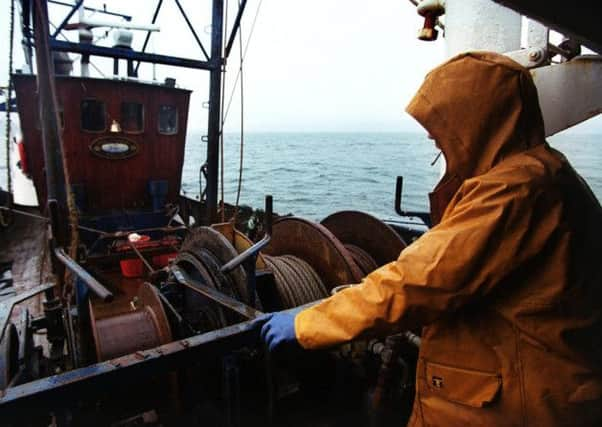Shetland fishermen fears over fish discards


Negotiations are du to begin on Monday between the European Union and Norway to decide on the catch limits for this year for the main North Sea stocks.
But Simon Collins, the executive officer of Shetland Fishermen’s Association, today claimed that proposed cuts in some of the mainstay catches of the Scottish white fish fleet could lead to even more discarding of species which are abundant around the islands.
Advertisement
Hide AdAdvertisement
Hide AdThe European Commission has tabled proposals for a 15 per cent cut in both the haddock and saithe catches, a reduction of up to 40 per cent in whiting catches and a 20 per cent cut in the ling quota.
Mr Collins said: “No one wants to see perfectly healthy, high-quality fish dumped back into the sea, dead. But in accordance with multi-annual plans devised before the discard ban materialised, the European Commission is proposing cuts in already inadequate quotas.”
He claimed: “Not for the first time, quotas are simply failing to catch up with what is happening on our fishing grounds. And the result is discarding for purely regulatory reasons. It is bitterly ironic to hear the commission arguing for quota cuts that would necessarily lead to more discards, as it was one of the prime movers in the so-called discard ban. Is it serious about tackling discards or not?”
Mr Collins said that Shetland boats were already conducting trials to see how a discard ban, due to come into force for pelagic fisheries in January 2015 and for other fisheries the following year, might work in practice.
“Our whitefish fleet has voluntarily taken a lead on this, designing and conducting trials, the results of which we will feed back to the commission and the Scottish Government,” he explained. “This move by the commission to aggravate an already complex problem is a slap in the face.”
Meanwhile the Scottish Fishermen’s Federation has revealed that fishermen have agreed to stop fishing in four areas off Scotland in the coming weeks to protect masses ofspawning cod as part of their commitment to conserve stocks.
An SFF spokesman said: “In addition to these four planned area shut downs, further closures will take place this year when ‘real time’ catch data from fishing and scientific research vessels identifies other spawning grounds or sea areas holding large congregations of juvenile fish.
“ In 2013, 166 areas amounting to 33,600 square miles of sea were closed to fishing on a temporary basis to protect aggregations of cod. The mechanism is also in place for further closures to protect nursery grounds of juvenile fish such as cod, haddock, whiting and saithe.”
Advertisement
Hide AdAdvertisement
Hide AdBertie Armstrong, the federation’s chief executive, said: “Scottish fishermen are working hard towards a sustainable future and these closures to protect spawning and young fish highlight this commitment. “Working in tandem with sampling work conducted by scientists from Marine Scotland, our fishermen accumulate catch data that can identify these vulnerable areas so as to bring around a swift closure.”